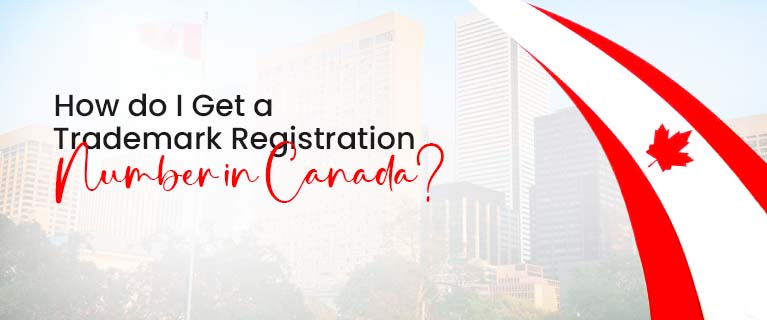In the vibrant landscape of commerce and business, protecting one’s intellectual property is paramount to maintaining a competitive edge and safeguarding brand identity. Among the various forms of intellectual property protection, securing a trademark registration number in Canada stands out as a crucial step for businesses and entrepreneurs looking to assert their ownership rights and establish legal exclusivity over their brand assets. In this comprehensive guide, we will delve into the intricacies of Canada Trademark Registration, elucidating the process of obtaining a trademark registration number and navigating the nuances of trademark law in Canada.
Understanding Canada Trademark Registration:
Canada Trademark Registration confers exclusive rights to use a trademark in association with specific goods or services within the Canadian marketplace. A trademark can consist of a word, phrase, symbol, design, or a combination thereof, serving as a distinctive identifier of the source of goods or services. Obtaining a trademark registration number in Canada provides tangible benefits, including legal protection against infringement, establishment of brand recognition, and enhancement of commercial viability.
Preparing for Trademark Registration
Before embarking on the journey to obtain a trademark registration number in Canada, it is essential to conduct a comprehensive trademark search to assess the availability and registrability of the desired trademark. This involves researching existing trademarks registered with the Canadian Intellectual Property Office (CIPO) to ensure that the proposed trademark does not infringe upon existing rights or raise likelihood of confusion issues. Engaging the services of a qualified trademark attorney or agent can streamline the search process and mitigate the risk of potential conflicts.
Read also this -: Who can Apply for Trademark Registration in Canada
Initiating the Trademark Application Process
Once confident in the availability and registrability of the trademark, the next step is to initiate the trademark registration application process with CIPO. The application must include detailed information about the trademark, including the specific goods or services with which it will be used, as well as the name and address of the trademark owner. Additionally, applicants may choose to submit a specimen or representation of the trademark to accompany the application, providing visual context for the proposed mark.
Examination and Publication
Upon submission, the trademark registration application undergoes a thorough examination process by CIPO to assess its eligibility for registration. CIPO examines the application to ensure compliance with statutory requirements, including distinctiveness, descriptiveness, and likelihood of confusion with existing trademarks.If all requirements are satisfied and there are no objections, CIPO will register the trademark and publish it in the Trademarks Journal for a predetermined amount of time. During that time, interested parties will have the opportunity to object to the registration if they feel that it violates their rights.
Opposition Proceedings
In the event that a third party files an opposition against the trademark registration, the applicant is afforded an opportunity to respond and defend their application. Opposition proceedings are conducted before the Trademarks Opposition Board (TMOB), wherein both parties present evidence and arguments to support their respective positions. The outcome of opposition proceedings may result in the registration of the trademark, refusal of the application, or negotiation of a settlement between the parties involved.
Read also this -: How to Register an Education Brand in Canada
Registration and Issuance of Trademark Registration Number:
If no oppositions are filed or if the applicant successfully defends against any oppositions, the trademark application proceeds to registration. Upon registration, CIPO issues a Certificate of Registration along with a trademark registration number, confirming the legal exclusivity and validity of the registered trademark. The trademark registration number serves as a unique identifier for the trademark within the Canadian trademark database, facilitating ease of reference and verification by interested parties.
1. Completion of Examination Process:
– If no oppositions are filed against the trademark application or if the applicant successfully defends against any oppositions raised, the trademark application proceeds to the next stage.
2. Notification of Acceptance:
– The Canadian Intellectual Property Office (CIPO) notifies the applicant of the acceptance of their trademark application.
3. Publication in the Trademarks Journal:
– The accepted trademark is published in the Trademarks Journal, allowing interested parties to review the application and file oppositions if they believe it infringes upon their rights.
4. Opposition Period:
– A designated period is provided for interested parties to file oppositions against the trademark registration application. This period typically lasts for two months from the date of publication in the Trademarks Journal.
5. Defending Against Oppositions:
– If oppositions are filed, the applicant has the opportunity to respond and defend their trademark registration application before the Trademarks Opposition Board (TMOB).
– Both parties present evidence and arguments to support their respective positions during opposition proceedings.
6. Resolution of Oppositions:
– The TMOB evaluates the evidence and arguments presented by both parties and issues a decision regarding the opposition.
– Possible outcomes include the registration of the trademark, refusal of the application, or negotiation of a settlement between the parties involved.
7. Registration and Issuance of Certificate:
– If no oppositions are filed or if the applicant successfully defends against any oppositions, the trademark application proceeds to registration.
– Upon registration, CIPO issues a Certificate of Trademark Registration confirming the legal exclusivity and validity of the registered trademark.
8. Receipt of Trademark Registration Number:
– Along with the Certificate of Trademark Registration, CIPO issues a trademark registration number.
– The trademark registration number serves as a unique identifier for the trademark within the Canadian trademark database.
9. Facilitation of Reference and Verification:
– The trademark registration number facilitates ease of reference and verification by interested parties, including businesses, attorneys, and consumers.
– It allows quick and accurate identification of the registered trademark within the Canadian trademark database.
10. Maintenance and Renewal:
– Following trademark registration, the trademark owner is responsible for maintaining and renewing their trademark registration to ensure its continued validity and protection.
– Trademark registrations in Canada are initially valid for a period of 10 years from the date of registration, renewable indefinitely upon payment of renewal fees.
This detailed process ensures that trademark applications proceed smoothly to registration, providing trademark owners with legal exclusivity and protection for their brands within the Canadian marketplace.
Read also this -: How to Register a Trademark in Canada
Maintenance and Renewal
Once obtained, it is incumbent upon the trademark owner to maintain and renew their trademark registration to ensure its continued validity and protection. Trademark registrations in Canada are initially valid for a period of 10 years from the date of registration, renewable indefinitely upon payment of renewal fees. Failure to renew the trademark registration within the prescribed timeframe may result in the loss of valuable rights and expose the trademark to risks of infringement or misappropriation.
Conclusion
In conclusion, obtaining a trademark registration number in Canada is a pivotal step for businesses and entrepreneurs seeking to protect their brand assets and assert their ownership rights in the marketplace. Through diligent preparation, strategic application, and adherence to procedural requirements, businesses can navigate the complexities of Canada Trademark Registration and secure legal exclusivity over their trademarks. By proactively safeguarding their intellectual property, businesses can bolster brand recognition, foster consumer trust, and pave the way for sustained success and growth in the Canadian marketplace.


